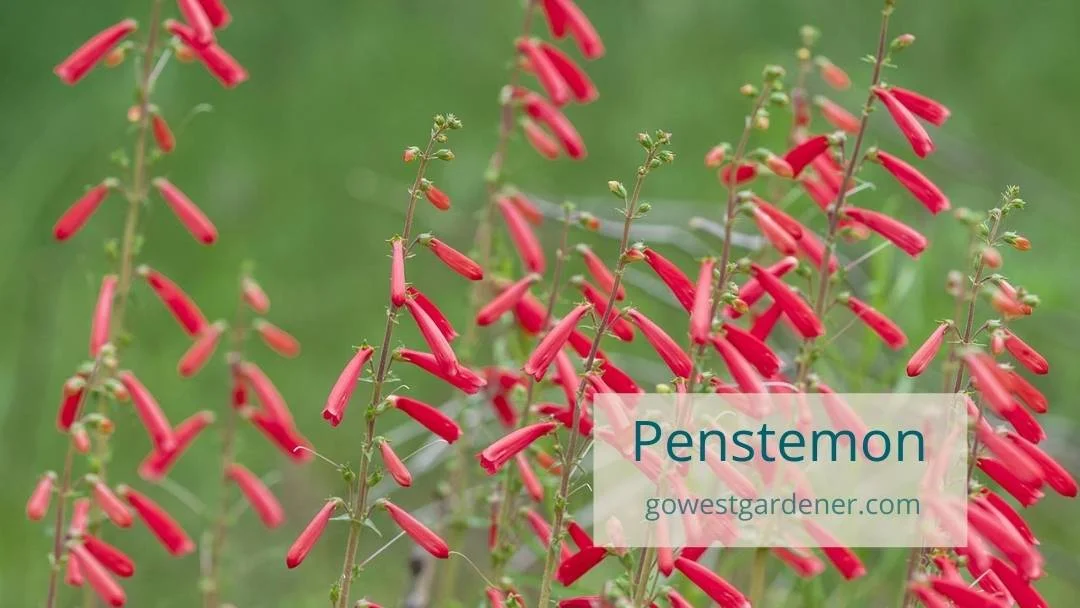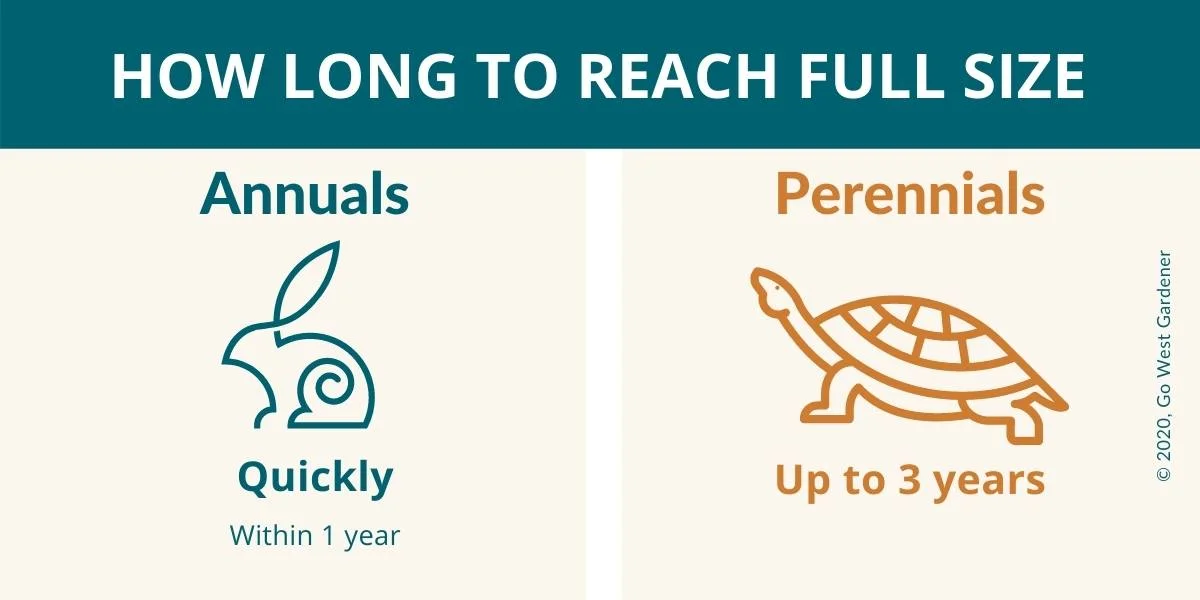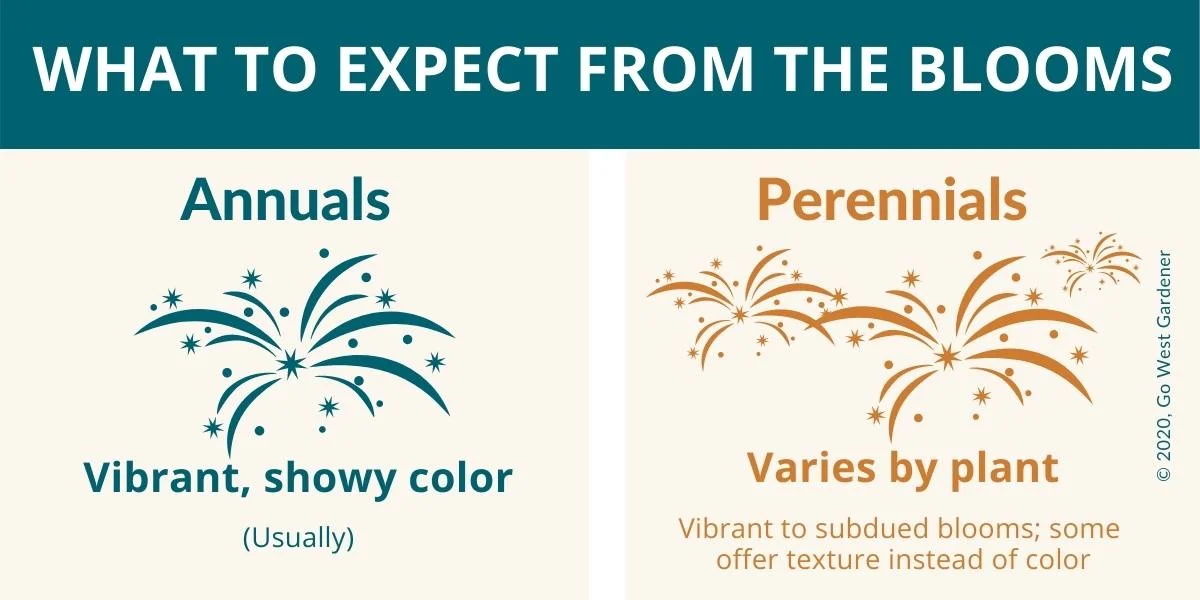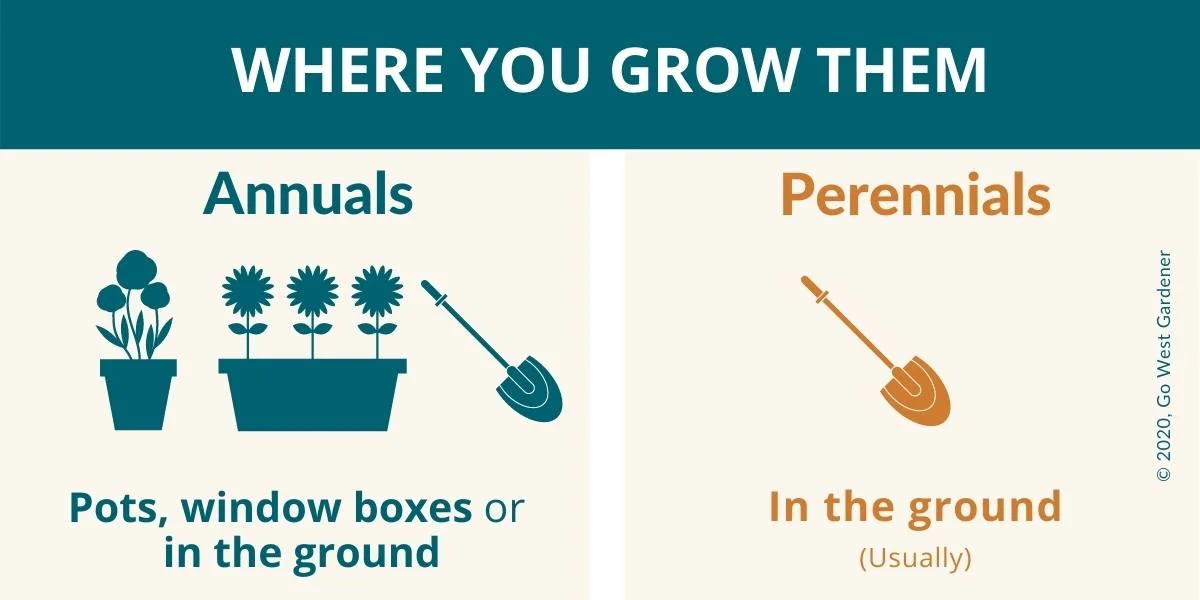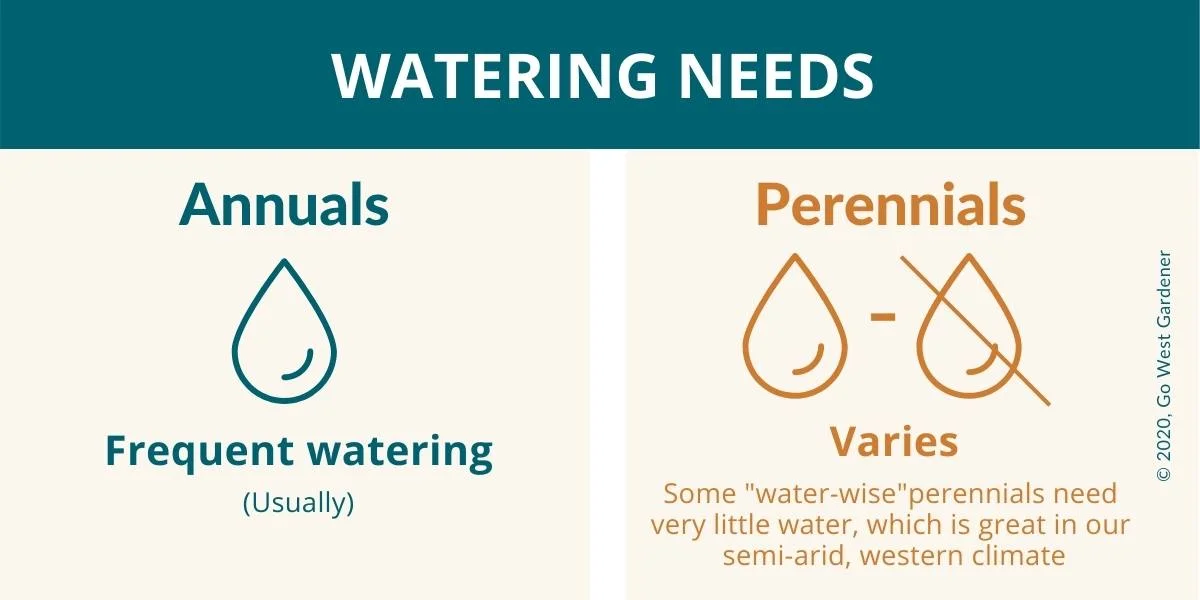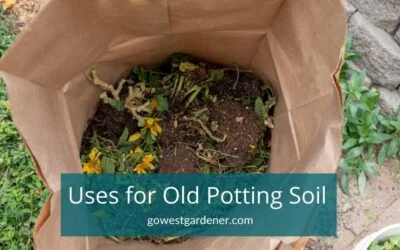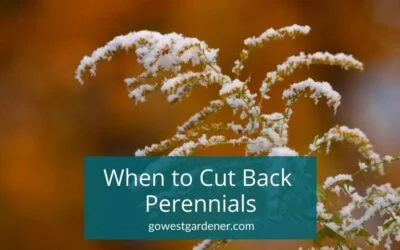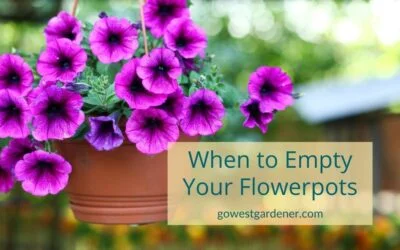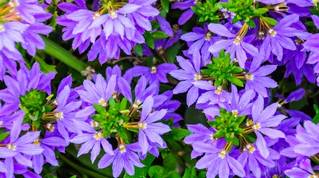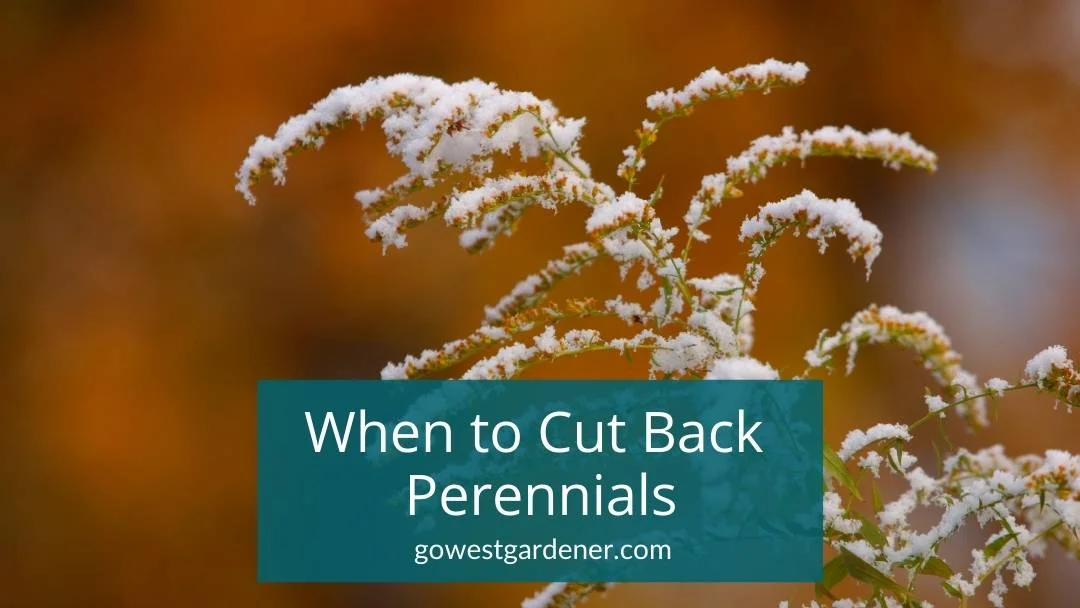As you start to learn more about gardening, you’ll likely find yourself playing a game of, “garden lingo bingo.”
And you will definitely see the garden terms, “annual” and perennial,” somewhere on your bingo card.
In this week’s tip, you’ll get the scoop on:
- What’s an annual vs a perennial
- A helpful trick so you can EASILY remember which is which
- Important differences between annuals vs perennials — and why those differences matter for your western garden
- Garden center tips so you can know how annuals and perennials are typically arranged at the store
What’s an annual vs a perennial?
If you find the word “annual” confusing, you are NOT alone!
In my opinion, the word “annual” is one of the most confusing gardening terms because of how we use “annual” in casual conversation:
“Hey, we’re hosting our annual summer barbecue. Come on over!
In day-to-day conversation, we use it to mean, “recurring.”
But that’s not what annual means in gardening. Here’s how gardeners think about it:
An annual flower plant grows for one season.
Then it’s done.
One and done.
Technically, a true annual flower goes through its entire life cycle within one year (from seed, to baby plant, to flowering, to end of life).
But gardeners are practical people.
They use the word, “annual,” to describe any plants that only last one year where you live. This includes flowers that could come back next year in some parts of the country, but these plants can’t survive our winters.
To keep it simple, just remember it all comes back to:
One and done.
In contrast, a perennial flower plant comes back year after year.
Some perennials live a LONG time.
My mom has perennials growing in her back yard that are more than 45 years old! I have perennials in my Colorado garden that have returned for 15+ years.
Other perennials have shorter lifespans of about 3-5 years. For example, many Penstemon plants (pictured below) tend to be shorter lived perennials in the West.
Here’s an easy trick to remember annuals vs perennials.
Annual = A single year.
Perennial = Plenty of years to come.
So, let’s chat about key differences between annuals vs perennials… and why they matter for your western flower garden.
Keep in mind that Mama Nature makes her own rules, so there are always exceptions. 🙂
How long until your annuals and perennials are full size
Annuals grow quickly, typically reaching their full size in one season.
Perennials, on the other hand, can take up to 3 years to reach their full size.
When you buy your cute, little perennial at the store, remember that it’s likely going to grow taller and wider. Look at the plant tags (tucked in the containers) to see how big your flowers will grow and how much room they’ll need when they’re full size. This can help you avoid planting your flowers too close together.
When you first plant your perennials, your garden may not look as lush and full as your neighbors’ gardens.
Don’t worry! This is normal. You haven’t done anything wrong.
Your garden will grow. It just may take a few years. While your plants are growing, you can tuck flowerpots of annuals into your garden for more color.
What to expect from the blooms of annuals vs perennials
Annuals often give you big, showy color that goes on for a long time.
Typically, though, they don’t keep the same flower blooms for the entire summer. Instead, annuals push up flower blooms, those blooms die, and then new blooms come in. To help this process along, you may need to remove the blooms that have died. (In gardening lingo, this is known as “deadheading.”)
Perennials vary in how much color they give you. Most bloom for a much shorter amount of time, often just a few weeks. When temperatures are hot, flower blooms don’t last as long.
Where you grow annuals and perennials (typically)
You can grow annuals in containers, window boxes and in the ground.
In Colorado, we often get hail during the summer, so I prefer to grow annuals in containers, rather than in the ground. Annuals often need more water than the waterwise plants in my garden. Plus, I find it’s easier to move and protect my flowerpots when hailstorms are in the forecast.
Perennials are typically grown in the ground.
But can you grow perennials in containers? Yes, absolutely!
Just keep in mind that they’ll likely bloom for a shorter amount of time. Perennials also are less likely to come back next year if they aren’t planted in the ground. (Near the end of the growing season, it helps to take them out of your containers and plant them in the ground.)
Watering needs for your annuals vs perennials
Many annuals need quite a bit of water. (There are exceptions.)
Perennials, on the other hand, vary in their watering needs.
If you’ve moved to a western state like Colorado or Utah from another part of the country, you may discover that the perennials you planted elsewhere need A LOT more water here.
Rather than trying to plant flowers from other regions, a different option is to look for perennials that have adapted to our semi-arid growing conditions in the West. These “waterwise” perennials often thrive with very little watering once they’re established.
Read: Less work for you + happy plants!
How to find annuals vs perennials at your garden center
Many local garden centers will arrange annuals together and perennials together to help you keep them straight.
If you walk into a garden center and it feels overwhelming at first, you’ve got this! Remember that you can head for the annual section or the perennial section.
And if you notice one section of the garden center is WAAAAAY more colorful than others (like in the photo below), that is probably the annual section. Annuals give you big, showy color.
Sometimes, there aren’t signs, but people are happy to point you in the right direction.
So, don’t hesitate to ask!
(If you’re buying flowers at home improvement stores, they’re more likely to mix annuals and perennials together.)


